Header logo
header top contact widget
Insurance Coverage & Payment Plans
Reshaping Gum Tissues To Protect Oral Health & Enhance Smiling Appearance
Posted on Mar 21, 2024 by William J. Claiborne, DDS MS
When people think about the appearance of their smiles, it’s typically the teeth that are the focus. Everyone wants a smile that enhances appearance, instills self-confidence and gets compliments. Yet, the appearance of a smile involves more than just teeth. The “frame” of gum tissues that arch the teeth most visible in a smile have a lot to do with how a smile looks.
As a periodontal specialist in Asheville, NC, part of my specialty involves the treatment of all stages of periodontal (gum) disease, the placement of dental implants, and the contouring of gum tissues. Gum contouring is generally done for esthetic reasons but may also be advised for oral wellness.
Gums most often pull away from the base of teeth (or “recede”), exposing darker areas of the tooth. This darker area is part of the tooth’s root and highly vulnerable to damage. Recession also causes teeth to look longer and expose darker tooth root areas of the tooth. Being sensitive to hot or cold – causing a sudden jolt of pain – is often the final warning sign that the gums are not protecting tender root segments of the tooth.
Gum recession is commonly due to:
• Gum disease, which destroys gums tissues, causing them to loosen their firm grip around the base of teeth. This enables oral bacteria to penetrate beneath the gum line, reaching vulnerable bone and tissues.
• Over-vigorous toothbrushing can wear away precious gum tissues that surround the base of teeth. When using a back-&-forth scrubbing motion, or a hard toothbrush, gum tissues can be scrubbed off. Too, using abrasive substances to brush (such as baking soda) not only wear down gum tissues, they wear away tooth enamel.
• The aging process lessens hydration in the body. Because the gum tissues are moist layers that require continual hydration (supported by saliva), oral dryness can cause the gums to draw up as they become drier. Unfortunately, this creates more challenges in maintaining healthy teeth.
While gum recession is an oral health concern, it is a cosmetic issue as well. For an attractive smile, teeth should be arched by a balanced level and shape of gum tissues. When there is too much gum tissue showing above teeth or varying heights of gums arching teeth, the height and symmetry of gum tissues can be corrected by a periodontist.
For example, in a gummy smile, too much of the gum line is visible. This makes teeth look short and draws the eye to the gums rather than the teeth. Gum tissues should complement teeth with a balanced line of gum tissues. While a gummy smile is not generally problematic for one’s oral health, many people find it makes them “hold back” on smiling fully.
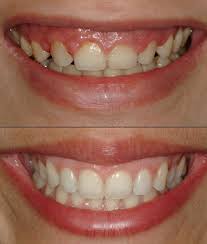
Before & After Of A Gummy Smile
The procedure to correct a gummy smile is a gingival lift, also known as a gum lift or gum contouring. This in-office procedure is performed to reduce and reshape highly visible gums.
In our Western NC periodontal dental office, we use a dental laser to perform a gingival lift. Our dental laser gives a precision line while only removing specific areas of the gums, leaving all surrounding tissue unharmed. This allows us to reshape the gums to create better balance in the smile.
A laser gingival lift also offers patients a more comfortable experience since it causes very little pain and therefore requires only topical anesthesia. In addition, laser treatments result in almost no bleeding and tissues tend to heal more quickly than after traditional surgery.
We also perform gum grafting that recovers areas where gum recession has occurred. This helps to protect the tooth roots and improves the appearance of the smile.
In gum grafting, we normally take a small area of tissue from the roof of the mouth and place it in the area of recession. When there is not sufficient tissue available, a graft may be from a donor source. The graft is attached to the natural gum tissue and gently sutured into the position where it corrects a smile’s appearance and reduces further recession and the potential for gum disease.
Several teeth may be involved in gum grafting when used to even out the gum line or reduce the risk of gum and bone collapse after a tooth has been lost. In these cases, cosmetic gum surgery is beneficial in reshaping excess gum and bone tissue. It also reduces sensitivity from exposed roots to hot or cold foods.
As a periodontist, I most commonly see gums that cover too much of the teeth as being due to genetics. When gums fail to cover sufficiently over the base of teeth, it’s typically the cause of recession, which can occur from several reasons (as listed prior). Regardless of why it has occurred, our goal is to provide the patient with the most healthy and esthetic outcome in a procedure that is comfortable, successful, and requires minimal healing time.
In our Asheville periodontal dental office, we offer some of the most advanced dental technology available. In addition to amazing imaging, such as Cone Beam 3D imaging, we provide Laser-Assisted New Attachment Procedure (or LANAP). This is a cutting-edge protocol to more efficiently and effectively treat periodontitis (advanced gum disease) with the PerioLase® MVP-7™ laser. Treatment is minimally invasive and helps to minimize both discomfort and recovery time. It has also been found to stimulate bone regrowth in damaged areas.
Additionally, our office offers both oral and I.V. sedation (“twilight sleep”) for complete relaxation during treatment. Sedation is administered safely by a doctor of anesthesia to provide optimal safety and comfort.
If finances have kept you from seeking out the care you need or the beautiful smile you desire, feel free to contact our friendly staff and arrange a consultation appointment. During this time, we can discuss the best options for you, cost estimates, and predicted treatment time.
We can also review several payment plans that make treatment affordable through extended, interest-free payment periods with no down payment required. These often help our patients enjoy their confident, new smiles while making easy monthly payments that are budget friendly.
Call 828-274-9440 to schedule.
How A Periodontist Can Help Cancer Patients
Posted on Mar 18, 2024 by William J. Claiborne, DDS MS
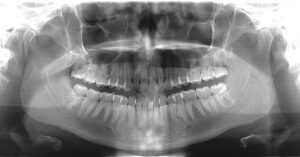
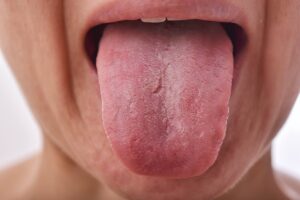
Dental Implants – Advantages of Specialized Skills, Advanced Technology, Optimal Comfort
Posted on Jan 10, 2024 by William J. Claiborne, DDS MS
It wasn’t that long ago when shopping for Christmas presents was quite the time-consuming ordeal. Today, we do searches for gift ideas online, check price comparisons, and have the items show up on our doorstep within a day or so.
Advancements through computerized technology have things running more efficiently and, in many cases, culminate into superior outcomes. This is true in dentistry, especially for those who opt for dental implants to replace missing teeth.
There are many reasons for people to choose dental implants, including:
– Designed to last a lifetime
– Look, feel and function like natural teeth
– Won’t decay or need repairs
– Restore chewing and biting comfort and stability
– Enhance overall health and confidence
– Halt the process of facial bone loss
Occasionally, dental implants are occasionally offered by general dentists. As a periodontist, however, I am referred most of our dental implant patients by other dentists and dental specialists. This is because a periodontist has advanced education and skills in the diagnosis and treatment of all areas of the tissues in the mouth (including the reshaping of gum tissues).
Periodontists are also specialists when it comes to the diagnosis and placement of dental implants. They are trained to understand the intricate concepts involved in selecting the proper type of implant based on each individual. These skills include the understanding of precision placements of implants at proper depths and angles. Additionally, periodontists are able to optimize your comfort and treatment outcome.
Still, another reason we are referred patients for dental implants because we can offer patients a wider variety of choices when it comes to implant systems.
There are many types of dental implants. Various systems are designed to support one replacement tooth (the “restoration”), a bridge of two or more teeth, or a full denture supported by several strategically-placed implants. Understanding the unique advantages of all systems enables us to choose the best type for the patient’s individual needs and goals.
For example, the All On Four dental implant system is designed to support non-removable teeth on just 4 implants (per arch). With its specially-designed implanted portions, these longer implants can fully distribute biting and chewing forces.
All-On-4 is an ideal choice for people who have lost bone mass due to lengthy periods of tooth loss. Because “All On 4” implants can be placed in minimal bone, many patients are able to avoid the need for bone rebuilding procedures prior to traditional implant placement.
In the placement, a periodontist is also the best “go-to” in dental implant skills. Here’s why…
For a dental implant to serve as a lasting tooth replacement system, it must be positioned in the jaw bone to specific depths and angles. An implant that is wrongly positioned can function less efficiently and lead to the need for removal.
For example, a periodontist can incorporate bone rebuilding procedures into treatment to a proper depth for patients missing a great deal of bone mass (typically due to missing natural teeth for many years). This can help to restore bone that has occurred in the mandible (lower jaw) or maxilla (upper jaw), which may also require a sinus lift.
Another example is a patient who has lost teeth due to periodontal (gum) disease. Because a periodontist combines advanced skills in treating gum disease as well as in dental implants, these patients have an added advantage when it comes to treatment success.
When it comes to the best way to pinpoint and tackle specific issues with our health, it makes sense to see a doctor who has received specialized training in that area. This helps to take the guesswork out of diagnosis and enhances the potential for a successful outcome in an efficient process.
A periodontist also has a reputation for being able to optimize patient comfort. Because a periodontal specialist is uniquely skilled in the care of gum tissues, he or she can provide a conservative approach to the placement process. Through respectful treatment of oral tissues (in both placement and exposure for restorations), less disruption to the gums allows for faster healing and higher comfort levels.
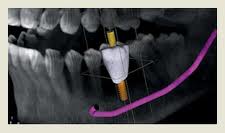 In our Western NC periodontal dental office, we incorporate our care with the advantages of some of the most advanced technology in dentistry; many options which are not readily available in other dental offices in our region. These computerized images offer advantages to patients in helping to minimize treatment needs.
In our Western NC periodontal dental office, we incorporate our care with the advantages of some of the most advanced technology in dentistry; many options which are not readily available in other dental offices in our region. These computerized images offer advantages to patients in helping to minimize treatment needs.
These include:
- LANAP (Laser-Assisted New Attachment Procedure) with PerioLase MVP 7 – an advanced protocol that efficiently and effectively treats advanced gum disease with the added advantages of a dental laser. This offers a non-surgical alternative for patients with moderate to severe periodontal disease and has even been found to stimulate bone regrowth in damaged areas.
- Cone Beam Imaging – is ideal for diagnoses and treatment planning through images that provide a clear view of the upper and lower jaw (including nerve canals), with rotations that show sagittal, axial, and coronal planes in a process that is quick, painless and at minimal radiation levels.
- CareStream Cone Beam Computer Tomography Imaging – is enhanced tomography that works with 3D imaging for exceptional detail and range.
- CS 3600 Intraoral Scanner – quickly and comfortably captures digital impressions to create precision models or appliances accurately and easily (crowns, inlays, onlays, bridges, orthodontic appliances, aligners, custom abutments) without the need for bulky, goopy trays.
- Computerized Dental Implant Placement – an advanced system for pre-surgical positioning of dental implants using a 3D model of the patient’s jaw. Once the implant type is selected, a template is developed for optimal treatment success.
For optimal comfort, we offer several sedation options, including oral and IV sedation. Oral sedation is a pill that helps patients relax. It also has an amnesiac effect, leaving most with little or no memory of treatment afterward. I.V. sedation (also known as “twilight sleep”) places the patient in a deeper sleep state and erases memory of the procedure. It is administered by a doctor of anesthesiology for optimal comfort and safety.
In our Western NC periodontal dental office, anesthesia is overseen by a Medical Doctor (MD) who is a board certified Anesthesiologist. With both sedation options, patients are closely monitored with advanced safety equipment throughout treatment.
Our goal is to help people move forward with treatment affordably for enhanced appearance, self-confidence and sense of security.
For those who have bypassed dental implants because of cost, our payment plans are often able to help patients enjoy the benefits of their dental implants without straining their budget. Most of these payment plans require no down payment, are interest-free, and have no prepayment penalty.
If you’ve considered dental implants in the past but have held back because of obstacles that may actually be overcome, begin by calling our Asheville periodontal dental office and speaking to our friendly staff at: 828-274-9440. Many dental implant patients find they were able to achieve the healthy smile they desired once they consulted with us and learned the options based upon their individual needs.
Don’t Allow Dental Fear or Anxiety To Ruin Your Smile
Posted on Aug 23, 2023 by William J. Claiborne, DDS MS
It’s a proven fact that your oral health – the wellness of your teeth and gum tissues – is an influencing contributor to your overall health. For decades, researchers have studied the concerning risks, and alarming connections, between oral health and a number of serious diseases in the body.
The leading culprit in this scenario are the bacteria of advanced gum disease, known as periodontitis. Gum disease breeds bacteria that are inflammatory in makeup. Once they enter the bloodstream (through tears in disease oral tissues), studies have found these potent bacteria can trigger the onset of serious diseases, such as:
• Heart disease
• Stroke
• Alzheimer’s disease & Dementia
• Some cancers (including lung and pancreatic)
• Pre-term babies
• Diabetes
• Arthritis
• High blood pressure
• Erectile Dysfunction (ED)
As research continues, more and more findings are bringing to light just how connected the mouth is to the efficient operation of the immune system. During the Covid pandemic, it was well publicized that those most vulnerable to the virus were those who were immune compromised.
One study, conducted between February and July 2020, analyzed two groups of 568 total patients with severe COVID-19 complications (death, ICU admissions or assisted ventilation). Periodontal conditions in the two groups were analyzed. Of the patients studied, those with periodontitis were three times more likely to experience COVID‐19 complications including death, ICU admission, and the need for assisted ventilation.
For years, the cost of dentistry has been credited for preventing millions of American adults from having regular dental care. This was recently studied in a nationally representative survey of 5,682 adults. In this, researchers looked at knowledge, attitudes, experiences, and behaviors related to oral health.
Results from the survey show that lack of insurance is a leading reason for avoiding dental care or delaying recommended care (often until something becomes so painful that the individual is forced into a dentist’s chair seeking relief).
The study showed that 16% of adults without dental insurance admitted that they had not seen a dentist in more than five years compared to just 5% of adults with dental insurance. Forty percent of adults without dental insurance reported cost was the reason they hadn’t visited the dentist in the past two years, compared to 14% of adults with dental insurance.
Yet, excruciating pain from a dental problem can be the impetus for setting aside the cost. The same is true for people who have fear or anxiety associated with dental care.
About 36% of people in the U.S. have a fear of dental treatment, with 12% having an intense fear, known as dentophobia. Dental phobics are people who avoid going to the dentist at all. Dental fear is more common in females than males, with an estimated 3% of men and almost 5% of women having dentophobia.
Reasons for these fears include:
– Fear the anesthetic will not work or be sufficient to fully numb the pain
– Blood makes some people feel afraid or panicky about bleeding during a dental procedure.
– People may fear choking or gagging and not being able to breathe or swallow.
– For individuals who have had a poor experience with a dentist in the past, they may associate negative feelings with their dentist.
– Feeling pain from the procedure or recovery
– Some people are highly fearful of needles.
– The noise from drills and dental instruments used by a dentist or dental hygienist can create high levels of anxiety for some people.
– The same is true when it comes to certain smells that arise during dental treatment.
New Study Links Periodontitis and COVID‐19 Complications
At our Asheville NC periodontal dental office, we take patient comfort very seriously, and that goes for all patients at every appointment. We find that many patients have developed severe gum disease or had tooth loss because they were afraid of going to a dentist. This prevents people from having regular dental care, which allows small problems to become worse ones.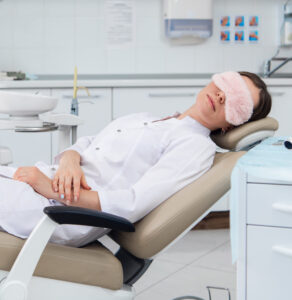
Many with dental fear or dentophobia avoid going to the dentist for years. And, these feelings may be more common than you know. When dental anxiety, dental fear and dentophobia are combined, it affects an estimated 70% of American adults. This unfortunate statistic is a likely reason for the high percentage of adults who suffer with some level of periodontal (gum) disease – over 47%.
As a Periodontist, my staff and I work diligently to pamper patients from the moment they enter. For certain procedures as well as for patients who prefer the addition of sedatives, we offer oral sedation as well as I.V. sedation (twilight sleep).
Oral sedation is a pill that helps patients relax. It also has an amnesiac effect, leaving most with little or no memory of treatment afterward.
I.V. sedation places the patient in a deeper sleep state, also erasing memory of the procedure. It is administered by a doctor of anesthesiology, overseen by Dr. Brad Stone, a Medical Doctor (MD) and a board certified Anesthesiologist & Pediatric Anesthesiologist.
https://www.biltmoreperiodontics.com/comprehensive-care-team/
With both sedation options, patients are closely monitored with advanced safety equipment throughout treatment.
If fear has caused you or someone you know to avoid dental visits, please arrange a consultation with us. In our Western NC periodontal dental office, you’ll find a warm, respectful atmosphere where your concerns are understood. During this time, we can discuss comfort options that may be best for your individual needs along with estimated costs.
Call 828-274-9440.
Recent Posts
Categories
Archives
- September 2024
- August 2024
- July 2024
- June 2024
- May 2024
- April 2024
- March 2024
- February 2024
- January 2024
- December 2023
- November 2023
- October 2023
- September 2023
- August 2023
- July 2023
- June 2023
- May 2023
- April 2023
- March 2023
- February 2023
- January 2023
- December 2022
- November 2022
- October 2022
- September 2022
- August 2022
- July 2022
- June 2022
- May 2022
- April 2022
- March 2022
- February 2022
- January 2022
- December 2021
- November 2021
- October 2021
- September 2021
- August 2021
- July 2021
- June 2021
- May 2021
- April 2021
- March 2021
- February 2021
- January 2021
- December 2020
- November 2020
- October 2020
- September 2020
- August 2020
- July 2020
- June 2020
- May 2020
- April 2020
- March 2020
- February 2020
- January 2020
- December 2019
- November 2019
- October 2019
- September 2019
- August 2019
- July 2019
- June 2019
- May 2019
- April 2019
- March 2019
- February 2019
- January 2019
- December 2018
- November 2018
- October 2018
- September 2018
- August 2018
- July 2018
- June 2018
- May 2018
- April 2018
- March 2018
- February 2018
- January 2018
- December 2017
- November 2017
- October 2017
- September 2017
- August 2017
- July 2017
- June 2017
- May 2017
- April 2017
- March 2017
- February 2017
- January 2017
- December 2016
- November 2016
- October 2016
- September 2016
- August 2016
- July 2016
- June 2016
- May 2016
- April 2016
- March 2016
- February 2016
- January 2016
- December 2015
- November 2015
- October 2015
- September 2015
- August 2015
- July 2015
- June 2015
- May 2015
- April 2015
- March 2015
- February 2015
- January 2015
- December 2014
- November 2014
- October 2014
- September 2014
- August 2014
- July 2014
- June 2014
- May 2014
- April 2014
- March 2014
- February 2014
- January 2014
- December 2013
- November 2013
- October 2013
- September 2013
- August 2013
- July 2013
- June 2013
- May 2013
- April 2013
- March 2013
- February 2013
- January 2013
- December 2012
- November 2012
- October 2012
- September 2012
- August 2012
- July 2012
- June 2012


